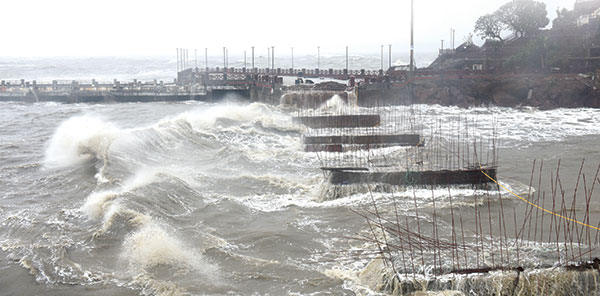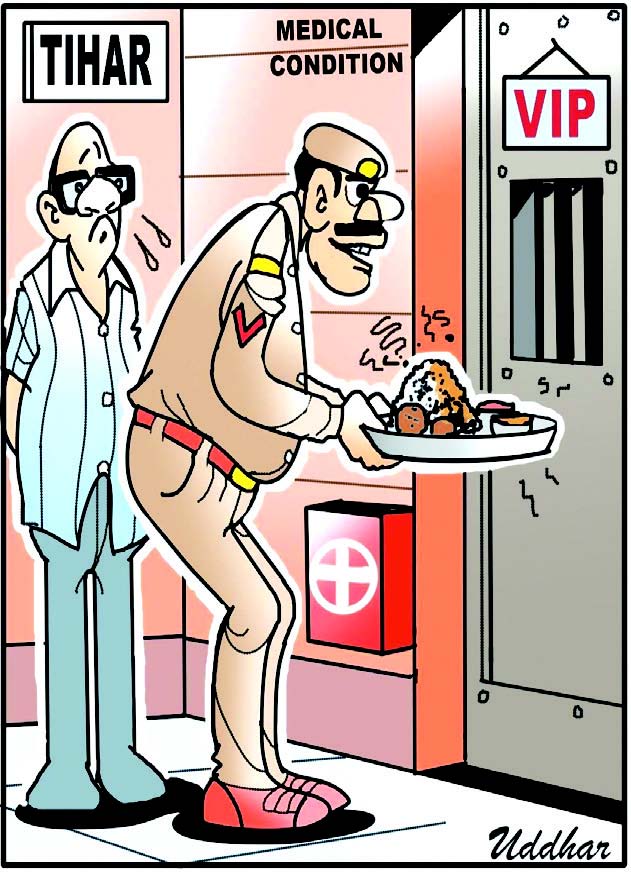
The ripple effect of Cyclone Asani in Bay of Bengal resulted in scattered light rainfall activity in the coastal State that has been witnessing scorching summer heat. While the Cyclone did not have much of an impact in Goa, the impact of Cyclone Tauktae last year left a trail of destruction.
Heavy rainfall accompanied by gusty winds and lightening highlighted some major deficiencies in Goa’s usual approach to cyclone management. Inaccurate total evacuee figures as well as inadequate focus towards measures to minimize crop damage, assistance for quick harvest, adequate relief and timely distribution of post-cyclone assistance such as for damaged houses, etc have been a centre point of discussion.
While Cyclone Asani has been the 19th Cyclone Goa experienced in the last three years, Cyclone Tauktae claimed two lives, damaged houses, uprooted trees and the electric poles, and caused a huge loss to the farmers and tourism stakeholders. The damage, Chief Minister Dr Pramod Sawant estimated was around Rs 100 crore approx.
This was followed by floods during the monsoon which was said to be the worst since 1982. The upcoming assembly elections prompted politicians and political parties offering immediate relief to their voters but by and large, the crucial question remains what Goa learnt from the disastrous Cyclone that will mark one year on Monday?
Besides dozens of temporary flood/cyclone shelters earmarked in case of emergency situation, five multipurpose cyclone shelters are created, two of which are under construction. An official in the office of North Goa Collectorate, which is the District Disaster Management Authority (DDMA), said while they head the team of several government agencies, their prime duty is coordination besides setting up control rooms and ensuring shelter homes for affected families/animals.
This District had not experienced by major floods in past few years, except in 2000 at Bicholim; 2005 at Mala, Panjim and Bicholim and in 2007 in Bicholim again due to overflowing of rivulet, causing no major casualties but heavy damages to properties.
Herald tried contacting North Goa Collector Mamu Hage in connection with the matter but there was no response.
The Directorate of Fire & Emergency Services (DFES), one of the main members of the Disaster Management Authority, informed it has upgraded its systems in time before the onset of rains.
On being asked about changes introduced after CyloneTauktae, Director of Fire and Emergency Services Nitin Raikerpromptly mentioned that the department has strengthened its resources - themen and their equipment.
“In terms of workforce, the Memorandum of Understanding (MoU) has been signed on behalf of the Government of Goa and the National Disaster Management Authority (NDMA) for implementation of “upscaling of Aapada Mitra Scheme” in Goa, wherein the Director DFES is the nodal officer for Goa. The Department has enrolled 350 Community Volunteers (Aapada Mitra &AapadaSakhi) whose services will be utilized during disaster response, relief and rehabilitation in the State,” he said.
The officer explained that funds from the Central Government have been received and the training commenced from April 30. The first batch of 16 volunteers completed their training while the second batch comprising of 21 volunteers is underway.
“The District Disaster Management Authority has also been informed to provide the services of professional expert tree cutters, services of Drishti’s life guards andboats, laboursfrom various municipalities and requisitioning of heavy machinery such as cranes and earth moversamongst others as per requirement,” Raiker said.
Chief Engineer of the Water Resources Department (WRD), Pramod Badami said every incident is a learning lesson.
“DDMA is doing an excellent job and the same is continuing. The response of the disaster team was excellent during the last cyclone. We also examine shortfalls in handling any calamity and work on it. We are prepared to handle any emergency situation and chalk out plans regularly. We take lessons from what we learnt from the incident,” he said.
Flooding in low lying areas is also a major concern for Goa but Badami said, this matter is being handled by the government.
“The flooding at Mala in Panjim will be tackled under the Smart City mission with a flood control system expected to be commissioned in July. Likewise, pumping stations are coming up in other low-lying areas including Sanquelim,” he said.
With hectares of crop destroyed, the Agriculture department can only provide financial assistance under any scheme or as ordered by the department. An officer said they pass on the weather information received from the Indian Meteorological Department (IMD) to the farmers; however, there is hardly any way to save the crops from damages. “We pay them compensation or financial assistance under any scheme by the government,” the official said.
As per a report in 2012, along the coastline of Goa, sea /coastal erosion was observed on the beaches at Siolim, Dona Paula and Anjuna beach. Additionally, according to a study by the National Institute of Oceanography, the beach along the Candolim-Sinquerim coast has been affected by erosion due to the grounded super tanker M.V. River Princess.
